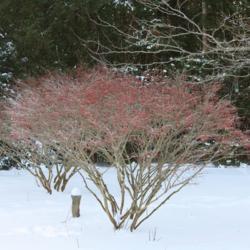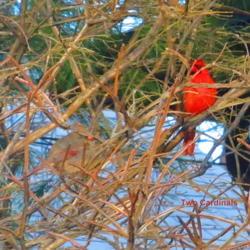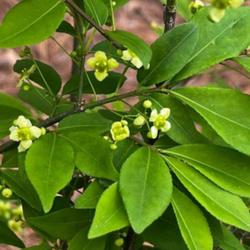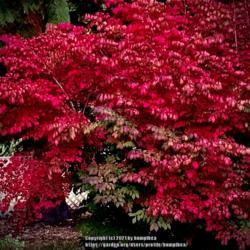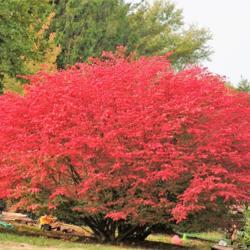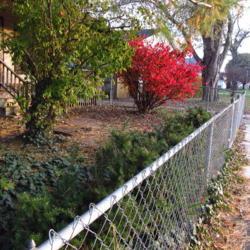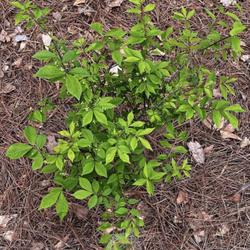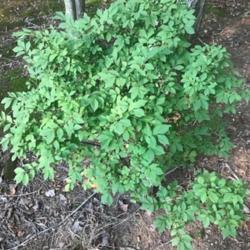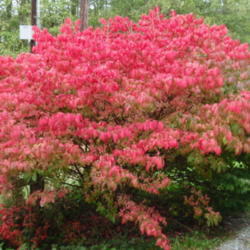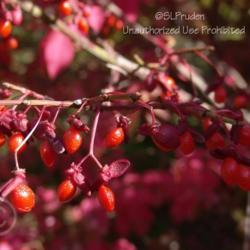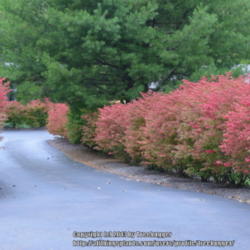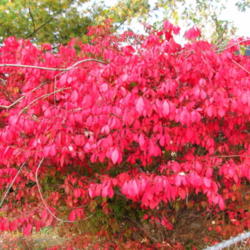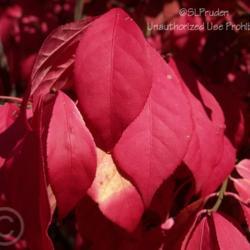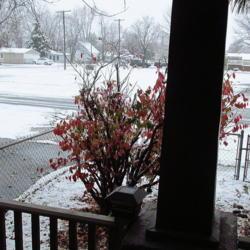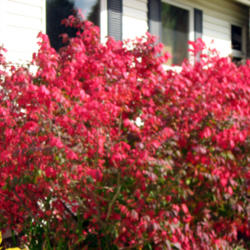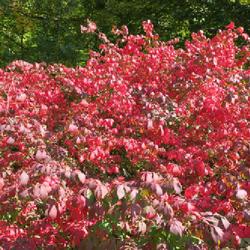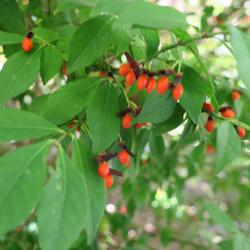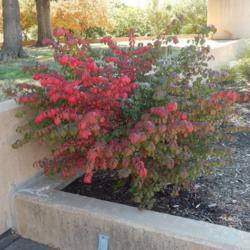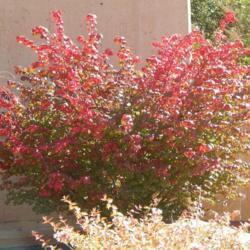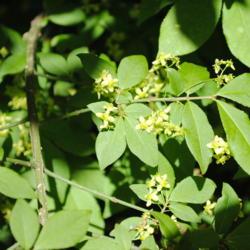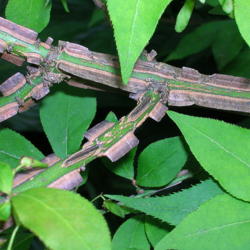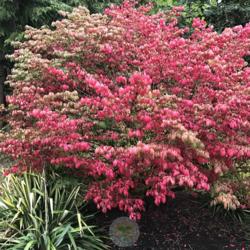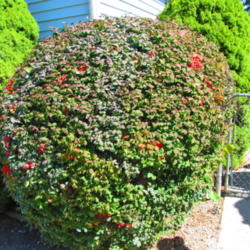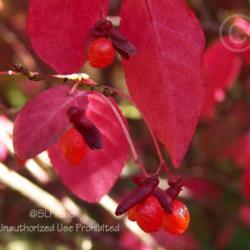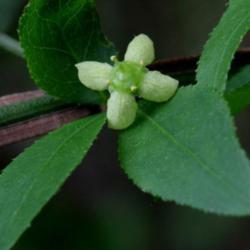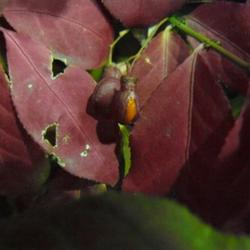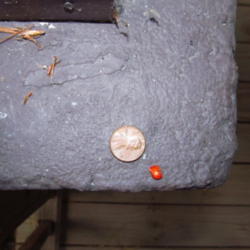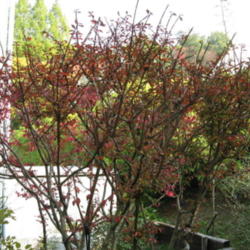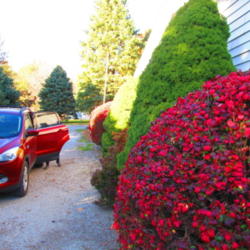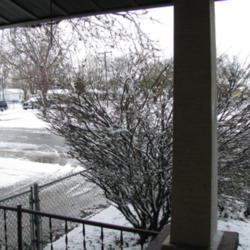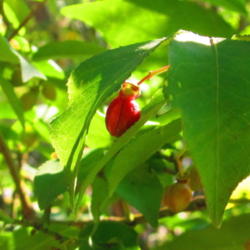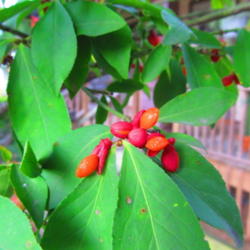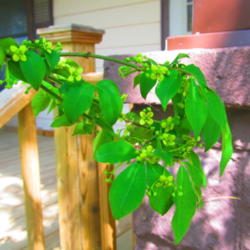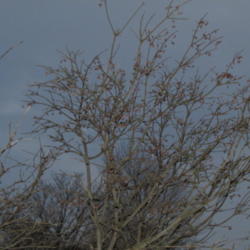Posted by
robertduval14 (Milford, New Hampshire - Zone 5b) on Mar 29, 2014 3:09 PM concerning plant:
The USDA and the U.S. Forest Service list the plant as invasive and a threat to mature forests and successional fields and woodlands because it out-competes native species.
It is illegal to plant these in New Hampshire, though I know people do it all the time, because too many people only care about invasives if it's something they, personally, don't want growing in their area.
Posted by
jathton (Oklahoma City, OK - Zone 7a) on Oct 25, 2019 4:19 PM concerning plant:
There are evidently lots of reasons to NOT plant Burning Bush if you live in Pennsylvania, New Hampshire, NYC and other points east. But living on the Southern Great Plains often gives gardeners a perspective they would not otherwise have. Burning Bush out here on the plains:
... adapts to a wide range of soil conditions
... tolerates moist and dry sites
... has no serious insect and/or disease problems
... is easy to transplant
... tolerates our blazing hot full sun in summers
... and provides a degree of red fall color seldom seen on shrubs on the Great Plains.
So, while others will condemn it as largely valueless, I'll hold with Michael Dirr's opinion that Burning Bush is one of the great aesthetic and functional shrubs available for American gardens.
Oh yes, pruned up it makes a beautiful multi-stemmed small shrub or tree for containers.
Posted by
ILPARW (southeast Pennsylvania - Zone 6b) on Oct 11, 2018 8:22 AM concerning plant:
This Winged Euonymus Burningbush is abundantly planted all around the Midwest, Mid-Atlantic, Northeast, and upper South of the USA, sold at most every conventional nursery, where it is referred to as the standard shrub rather than the compact variety that is even more commonly planted. It is native to northeast Asia. It is a good quality, neat , clean, large shrub that has handsome foliage and red fall color, (pink in shade). Its winged twigs are handsome that range from slightly winged to very winged, depending. It develops a very dense, powerful, fibrous root system, so that one can't plant some other kind of plants close to it after it is mature. It develops very dense foliage, so that many use it for a dense screen or sheared hedge. Unfortunately its orange seeds are eaten by some birds and deposited out in the wild where it has become an invasive Asian plant in or along woods in eastern North America. When I go out and attack invasive Eurasian plants in the wild to aid the native plants, this is one of the common ones that I take out. I consider this shrub as over-used and I wish for more variety in landscapes.
Posted by
Bonehead (Planet Earth - Zone 8b) on Oct 12, 2013 11:00 AM concerning plant:
Neat habit which doesn't require any pruning, bright green foliage in spring, white flowers, leaves turn a rich red in fall, and orange berries hold on all winter. Excellent low-maintenance four-season shrub.
This is not listed as an invasive plant in Washington, but rather appears to be more of a problem on the east coast. One should, however, be mindful of its potential to escape on the west coast as well. This plant is a mainstay of parking strip plantings, although they tend to get pruned often and severely so likely do not bear as much fruit as they would if left to their natural growth habit. I presume they spread through bird droppings, as they don't appear to sucker. I have never run across one wild in the PNW, nor had unwanted seedlings appear (I have 3 shrubs).
As a side note, this plant has been over-used to the point that my landscape son refers to it as "you wanna miss" that one..
Posted by
bxncbx (NYC - Zone 7a) on Oct 4, 2016 9:11 AM concerning plant:
Considered invasive (or potentially invasive) in the following states: CT, GA, IL, IN, KY, MA, NC, NH, SC, TN, WV. Also the District of Columbia (DC).
